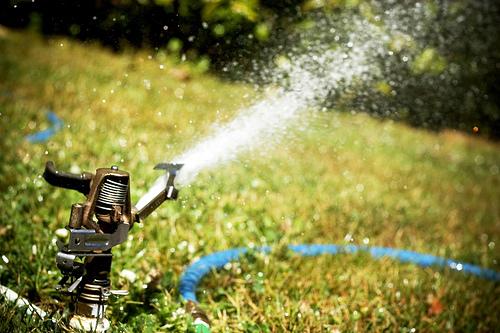Outdoor irrigation accounts for up to 60% of residential water use in some parts of the US.
The type of irrigation method for delivering water to plants plays a large role in the amount of water used and the effectiveness of the irrigation system.
Turf generally requires more water than bedding plants, shrubs, and trees, therefore, design the irrigation system with this in mind.
Sprinkler Head Types
Rotary Heads
- Large spray radius (15-50 ft.) – Good for large areas
- Low flow rate reduces puddling and runoff
- High spray force helps prevent clogging of spray heads

Spray Heads
- Good for use in small areas
- Higher rate of flow than rotary heads
- More susceptible to water runoff and puddling
- Spray heads are stationary with a wide range of coverage
- The water is emitted in fine droplets that, on hot days, may lower irrigation efficiency through evaporation
- Versatile and can water difficult and small areas that rotors cannot

Bubblers
- Application of water to individual plants or plant groups
- Flow rates are higher than drip systems
A bubbler irrigation system applies water to individual plants or groupings of plants.
Video source: Bubbler YouTube
These three irrigation systems are all used in residential landscapes. Drip irrigation is addressed in another section.
Additional Resources:
Southeast
Clemson University – Landscape Irrigation Equipment
